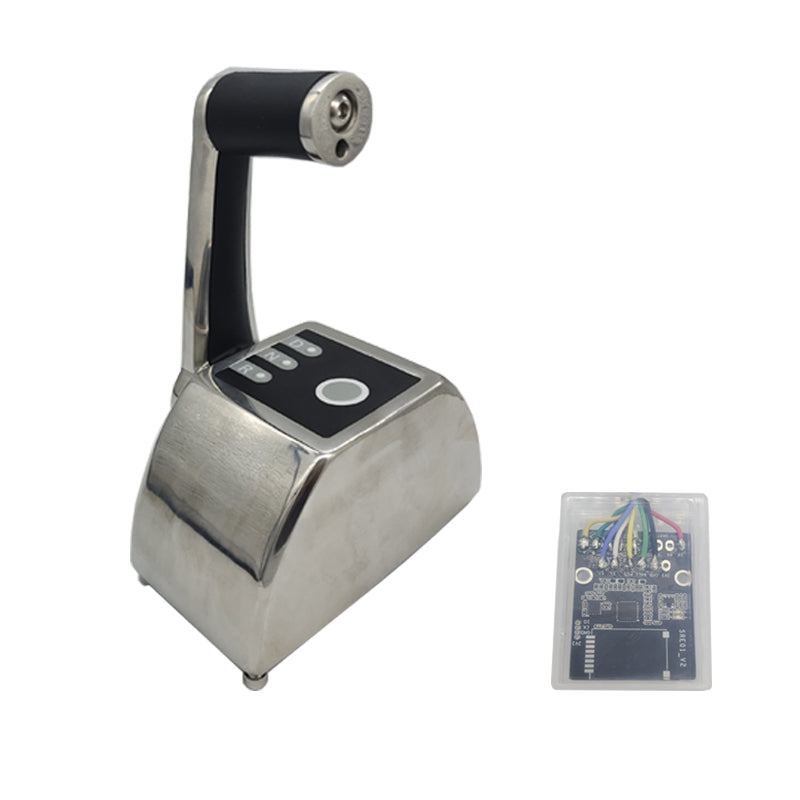
Can RS232 PWM Marine Forward Backward Throttle Lever
Customization Service
We are the OEM ODM manufacturer. For bulk orders and custom solutions, please contact us at official@hobbywater.com
When will I get my order?
We prioritize fast order processing. For in-stock items, orders placed before 4:00 PM (Beijing Time) will be shipped the same day. Standard orders typically ship within one week, while customized orders require approximately 15-30 business days for production and delivery. Delivery times may vary under special circumstances.
Shipping Methods
We ship to most countries worldwide. However, please ensure compliance with your local import regulations.
- For the USA: We offer tax-inclusive shipping options. Expedited orders are shipped via DHL, UPS, or FedEx. Note: DHL does not allow undervaluation.
- For other countries: Tax-inclusive shipping is available upon request. Otherwise, orders will be shipped via 4PX by default.
For specific shipping requirements, please contact us in advance.
Discover the Ultimate Marine Throttle Lever with Advanced Control Features
Introducing our state-of-the-art Marine Throttle Lever, designed for precise and reliable control of your marine vessel. With cutting-edge technology and robust construction, this throttle lever is perfect for various marine applications.
Key Features and Advantages
Sensor: Hall Effect
Operating Angle: 156°
Gear Position: 3 gears (DNR)
Operating Cycles:> 5 million operations
Signal Output: Analog voltage 0.5~4.5V, CAN, RS232, PWM
Power Supply: DC5V (DC12V/DC24V)
IP Grade: IP67
Operating Temperature: -40℃ to +70℃
DNR Indicator Lights:
D (Forward Gear): When handling this gear, the red light turns on. Pushing the handle forward activates the accelerator control, and the green light turns on.
N (Neutral Position): When handling this gear, the red light turns on.
R (Reverse Gear):When handling this gear, the red light turns on. Pulling the handle back activates the accelerator control, and the green light turns on.
Why Choose Our Marine Throttle Lever?
Precision and Reliability:
Experience smooth and accurate control with our Hall effect sensor, ensuring precise operation every time.
Durable and Long-Lasting:
Built to withstand the harsh marine environment, our throttle lever is rated for over 5 million operations and meets IP67 waterproof standards.
Advanced Signal Output:
Supports analog voltage, CAN, RS232, and PWM signals for versatile connectivity options.
Easy Operation:
Clear DNR indicator lights guide you through gear changes and accelerator control, ensuring a seamless user experience.
Wide Temperature Range:
Operates reliably in extreme temperatures, from -40℃ to +70℃, making it suitable for various marine conditions.
Ready to Upgrade Your Marine Control?
Elevate your marine experience with our advanced throttle lever, offering unparalleled control and durability. Whether you're navigating forward, reversing, or staying in neutral, our throttle lever provides the precision and reliability you need. Order now and set sail with confidence!
Thruster Safety: Quick Guide
1. For Your Safety:
- Keep Clear: Never put hands, feet, or anything near the propeller when it's plugged in. It can spin without warning and cause injury.
- No Water, No Power: Do not run the thruster in air for more than 10 seconds. It needs water to cool itself or it will break.
2. For The Thruster's Safety:
- Check Seals: Always check that the rubber O-rings are clean, greased, and undamaged before putting it in water.
- Avoid Debris: Keep it away from weeds, sand, and plastic bags. These can jam and break the propeller.
- No Regular Glue: Do not use normal threadlocker (screw glue) on any screws. It will crack the plastic body. Only use a kind that is safe for polycarbonate.
3. Simple Rules:
- Test First: Always test in a bucket or pool before going to open water.
- Rinse After Use: Always rinse with fresh water after use, especially in saltwater.
- Store Safely: Keep it in a case to protect it from bumps and dust.
Thruster Propeller Guide
1. Two Propeller Types:
- You get two propellers: one labeled "CW" (spins clockwise) and one labeled "CCW" (spins counterclockwise).
2. How Thrust Works:
- Forward Thrust (Recommended):A CW propeller pushes best when spinning clockwise.A CCW propeller pushes best when spinning counterclockwise.✅ Use this for maximum power and efficiency.
- Reverse Thrust:Both can also spin the opposite way to push backwards.⚠️ This works but is weaker and less efficient.
Quick Tip: Always check the label (CW/CCW) to make sure you have the right propeller installed for the direction you want to go. For the strongest push, use forward thrust.
What You Need to Run a Thruster?
The Thruster: The main unit, which contains a brushless DC motor.
- Power Source: A battery pack or power supply.
- A Controller: Something to tell it how fast and which way to spin (e.g., a remote control).
How to Connect It:
- If your thruster has a built-in ESC:
You can often connect it directly to a standard PWM receiver. - Important Note on Power:
If your receiver or ESC does not have a BEC (Built-in Eliminator Circuit) to power itself, you will need to add a separate BEC module. This provides the necessary power for the electronics.
Thruster making strange sound,broken?
It's normal for our thrusters to be loud.They use plastic bushings, so small movements between parts can cause sound. This noise is greatly reduced underwater, as water lubricates and cools the system.Never run them dry for more than a few seconds—it can permanently damage the bearings. Every thruster is tested to work properly.















